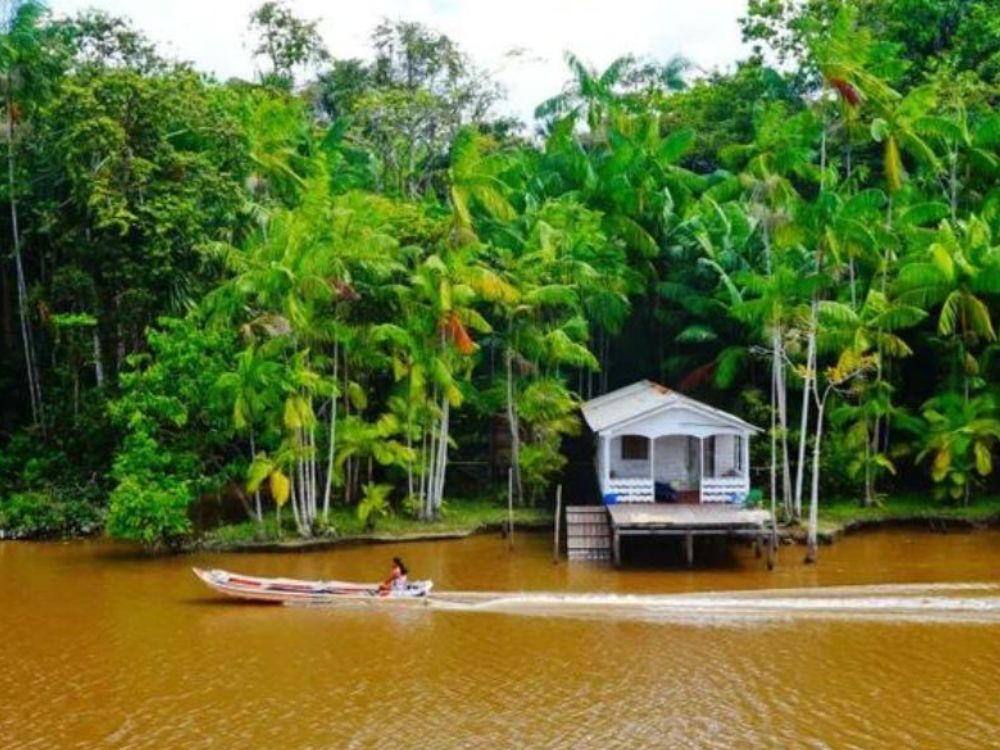
Amid the vast green expanse of the Amazon, Amapá stands out as a state with unique natural and cultural riches. With temperatures averaging around 31 degrees Celsius, the climate here is typically equatorial—hot and humid, contributing to the lushness that defines this region.
Amapá’s population of approximately 877,000 is a vibrant mix of cultures, reflecting the state’s complex history.
Once a stage for colonial disputes, Amapá now celebrates its diversity. Spanning over 142,000 square kilometers, the territory is marked by mighty rivers and biodiversity that challenges the imagination.
The colonization history of Amapá is a tale of resistance and resilience. Initially influenced by the Spanish under the Treaty of Tordesillas, the region was coveted by various nations due to its strategic location and natural resources.
The discovery of gold and the rubber boom in the 19th century brought a new wave of settlement, shaping Amapá’s identity.
Local customs in Amapá are a vibrant reflection of its soul. Marabaixo, a traditional dance of African origin, expresses devotion and resilience.
This dance, characterized by its rhythmic drum beats and elaborate movements, is a celebration of cultural heritage and community spirit.
The craftsmanship in Amapá reveals skills passed down through generations, with artisans creating intricate pieces from local materials such as wood, seeds, and natural fibers.

Amapá’s cuisine is a feast of flavors. Dishes like pato no tucupi and maniçoba showcase generous use of local ingredients. Pato no tucupi, a duck dish cooked in a tangy tucupi sauce made from wild manioc, and maniçoba, a hearty stew prepared with manioc leaves, are culinary masterpieces that highlight the region’s rich culinary traditions.
These dishes are not just meals but stories of the land and its people, offering a sensory journey through Amapá’s cultural landscape.
Traditional festivals and events are the pulsating heart of Amapá. From the vibrant Carnival to the lively June festivities, each event is an opportunity to celebrate life and culture.
The Marabaixo Festival, in particular, is a highlight, where the community comes together to honor their ancestors through music, dance, and rituals.
These celebrations are more than just entertainment; they are a testament to the enduring spirit and cultural wealth of the Amapá people.
For those seeking a connection with nature, river beaches like Fazendinha offer a unique setting where the river meets the sea. These beaches are perfect for relaxation and exploration, providing a serene escape from the urban hustle.
The region’s natural beauty is complemented by its rich wildlife, making it a paradise for nature enthusiasts and adventure seekers.
Important cities like Macapá, the capital, are hubs where the past and present converge. The city boasts a mix of colonial architecture and modern urban dynamism.
The Fortaleza de São José, a 17th-century fortress, stands as a historical landmark, offering insights into the region’s colonial past. Macapá also features modern attractions, such as the Marco Zero monument, where the equator runs through the city, symbolizing its unique geographical position.
Other notable cities include Oiapoque and Laranjal do Jari, each with its own stories and landscapes worthy of discovery. Oiapoque, located at the northernmost point of Brazil, is known for its cultural diversity and proximity to French Guiana. Laranjal do Jari, on the other hand, is renowned for its beautiful river landscapes and vibrant community life.
The appearance of Amapá’s cities invites contemplation and respect for nature. Urbanization here strives for harmony with the environment, reflecting a commitment to sustainability.
The city’s green spaces, parks, and riverside areas are carefully preserved, providing residents and visitors with a tranquil environment to enjoy.
This approach to urban planning serves as a constant reminder of the importance of preserving natural heritage for future generations.

Amapá is a state that offers not just a journey, but an experience that intertwines with the very essence of nature and culture.
From its rich history of resilience and diverse traditions to its stunning natural landscapes and vibrant urban centers, Amapá is a place where every corner tells a story.
Whether you’re drawn to its historical landmarks, cultural festivals, culinary delights, or the serene beauty of its river beaches, Amapá promises an unforgettable adventure.
Come and discover Amapá, where every day is a new opportunity to explore, celebrate, and connect with the wonders of the North.
